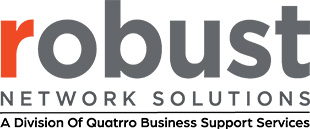According to Gartner, the worldwide information security market is predicted to reach over 170 billion dollars by 2022. The reason for this rapid expansion is twofold. First, organizations are bolstering their ability to respond to evolving threats. On the other hand, cyber criminals are stepping up their game in designing ransomware, malware, and other attacks, in an effort to overcome increased security. This seemingly vicious cycle presents organizations with a dilemma: is it prudent to keep IT measures contained in-house, or is it wiser to outsource IT to industry professionals? The answer actually depends on the needs of your organization.
The Advantages of In-House IT Haven’t Done It Already?
There are circumstances where in-house IT is the best approach. For example:
- Complex local hardware infrastructure: If the needs of your organization dictate that it’s advantageous to have IT staff members physically on-site, then an in-house IT department may be the way to go. This is especially true if there is complex hardware on site that is critical to the operation of your organization and requires professional monitoring and maintenance.
- Unique services or procedures: If your organization operates in a sector that provides unique or complex services or specialized procedures, it may be better to train an in-house IT team to perform with knowledge of these nuances as part of the supply chain.
- A unique business culture or image: Some organizations operate within a certain “culture” that is closely connected with their brand or image. In this case, having an IT department that is part of the “culture” or family is advantageous.
The Advantages of Outsourcing IT
In other circumstances, IT outsourcing is both advantageous and cost-effective. For example:
- Specialized services: Industry professionals offer a wide range of specialized services. Training an in-house IT department to have the same range of services would be time consuming and cost prohibitive.
- Round-the-clock assistance: An in-house IT team would normally clock in and out like other employees, even if they remain on call to some degree. However, most professional IT service organizations will offer immediate support 24/7.
- Agile services at a reduced cost: In-house IT employees are salaried and require sick pay, a pension, and holidays. And these expenses are paid whether there are threats or not. Professional IT services, on the other hand, are usually paid as a monthly fee or possibly on a per-project basis. They are responsible to stay up to date and respond in real-time to threats, train employees, and prepare for zero-day threats.
The Possibility of a Hybrid Solution
Of course, you may like the advantages of both approaches, and for some organizations a hybrid solution is attractive. Services that require in-house knowledge are assigned to a small in-house IT team, while expert advice and solutions are found in hiring a professional IT services provider. Both teams work together to provide hybrid support for a mutual goal.
Choosing the Best Solution
After considering the advantages of each solution, you may have a clear approach in mind that best suits your organization. Further consultation with industry professionals can help you to chart out an IT services strategy that can protect your organization as the threats and needs of cybersecurity evolve.

